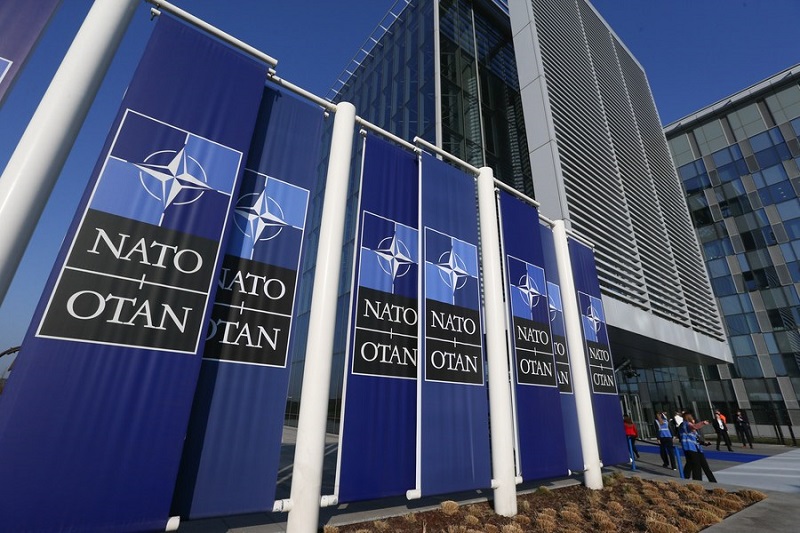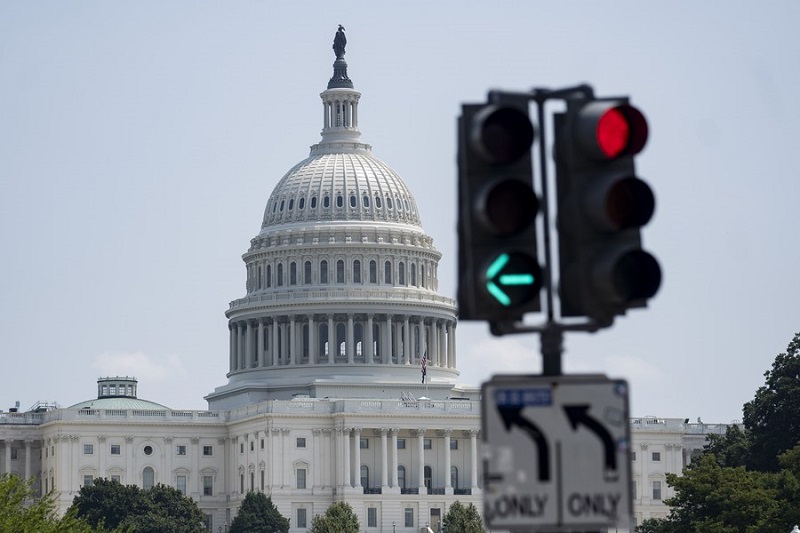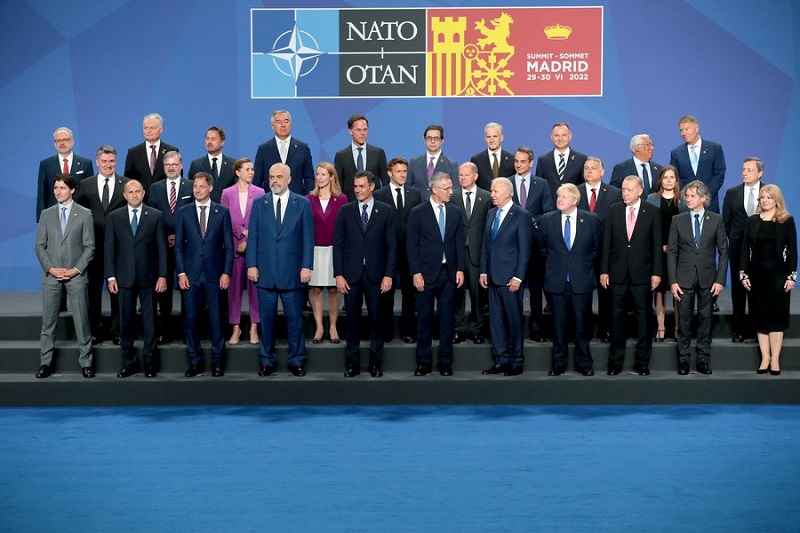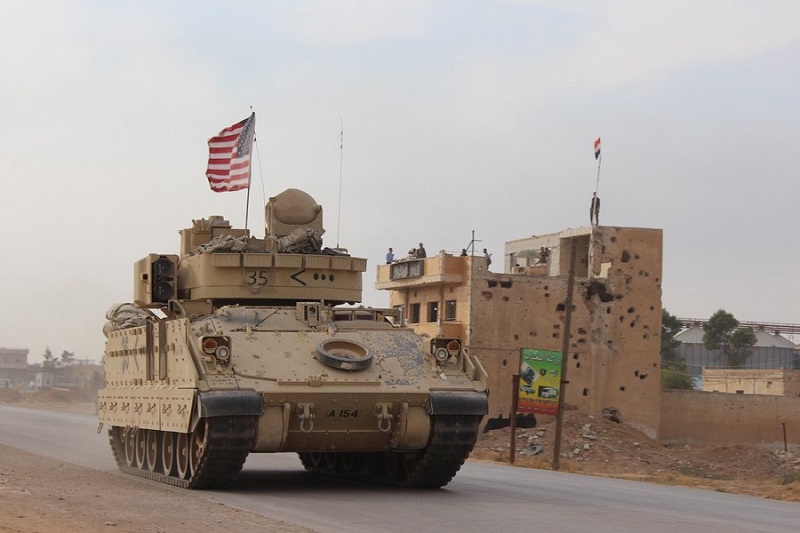The recent NATO Summit held in Madrid is touted as strengthening NATO unity and cooperation. But behind superficial appearances differences exist on policy toward Russia and China.
The North Atlantic Treaty Organization (NATO), a military alliance formed in 1949, was said to be a “defensive” alliance in the face of a perceived threat from the Soviet Union. The geographic area of operation of the alliance, the US and Canada plus Western Europe, gave it its name.
Back in the day, there was strong political opposition in the United States to joining such an “entangling alliance” as NATO. This policy position was embedded in United States foreign policy tradition and was based on the principle of sovereign independence.
President George Washington himself warned against “permanent alliances” suggesting that temporary alliances formed out of necessity were acceptable. President Thomas Jefferson emphasized Washington’s wise policy by saying in his Inaugural Address of 1801 that US foreign policy principles were “peace, commerce, and honest friendship with all nations, entangling alliances with none.”

The political opposition to the United States joining NATO was led by US Senator Robert Taft, a Republican and son of President William Howard Taft. Taft represented the conservative faction in the Republican Party that was anti-interventionist. Taft was the leading Republican figure of his day and was called “Mr. Republican” by admirers.
Taft argued that such an alliance would ultimately lead to war with Russia which he opposed.
A key concern of some US Senators in the NATO treaty was the issue of automaticity. That is to say, under the US Constitution Congress holds the power to declare war. Article 5 of the proposed NATO treaty appeared to require automatic adherence to a decision for war and thus contravened the US Constitution.
After much negotiation compromise language was worked out that did not imply automatic adherence to a decision for war. Thus, the revised language stated that each member state could “take such action as it deems necessary, including the use of armed force, to restore and maintain the security of the North Atlantic area.”
The vote in the US Senate on July 21, 1949 was 82-13 in favor of joining. However, opposition to membership in the NATO alliance persisted through the years particularly in old guard conservative circles in the Republican Party. For them, the NATO alliance and “Atlanticism” is part and parcel of the Wall Street based Establishment’s “liberal internationalist” agenda meaning the so-called neo-liberal “rules based international order” dominated by the US.

During the administration of President Harry Truman, subsequent to the US joining the NATO alliance, US foreign policy was militarized as part of the Cold War. The militarization of US foreign policy was a direct result of the National Security Council Paper NSC-68 of 1950, entitled “United States Objectives and Programs for National Security” and frequently referred to as NSC-68.
This paper was a Top-Secret report by the US Department of State’s Policy Planning Staff completed on April 7, 1950. This 58-page memorandum is among the most influential documents composed by the US Government during the Cold War and was not declassified until 1975.
The authors of NSC-68 argued that one of the most pressing threats confronting the United States was the “hostile design” of the Soviet Union. They concluded that the Soviet threat would soon be greatly augmented by the addition of more weapons, including nuclear weapons, to the Soviet arsenal. They argued that the best course of action was to respond in kind with a massive build-up of the U.S. military and its weaponry.
Seven decades later this same Cold War policy and mentality remains at the core of US foreign policy and national security planning. This entrenched policy today led to the US-led NATO proxy war in Ukraine and led to the intense present US war planning to “defend Taiwan” against China as if Taiwan were a separate country from China.
The NATO Madrid summit, in the context of the Ukraine war, reaffirmed its old rhetorical language of solidarity and some grandiose gestures were made toward increased spending and commitments.

For decades, the issue of “burden sharing” has been an issue. Over the years, “Uncle Sucker” in Washington picked up most of the tab for NATO while cynical Europeans were only too happy to have the US shoulder most of the burden. Only 9 of the 30 current members of NATO pay the agreed 2 percent of their GNP to share of the defense burden. Big countries like France, Germany, Spain, and Italy consistently fail to pay their share thereby exploiting US taxpayers.
Another issue over the years is the matter of “forward basing”. That is to say, should US forces and war materiel be stationed on foreign soil in Europe and, if so, then how much should be stationed there. Today, the US has some 100,000 troops in Europe which is a historically high number since the mid-1990s. At Madrid, NATO took a decision to increase its rapidly deployable troops to at least 300,000.
Aside from such Europe related gestures and rhetoric, the Madrid summit included a new Strategic Concept which underscored China as a threat. In the prior 2021 summit, China was singled out as a “systemic challenge” to NATO.
That the Madrid summit included the so-called “China Threat” should come as no surprise. NATO observers for years noted its eastward expansion as not limited to Eastern Europe. The alliance over the past three decades developed relations in the Mediterranean, in Eurasia, and in Asia. Japan, South Korea, Australia, and New Zealand have been included in NATO’s global “partners” for years.
NATO “out of area” military action over the years included Yugoslavia, Libya, Afghanistan, and Iraq. Thus, the original North Atlantic operational zone was globalized.

Today, in the Asia-Pacific, the focus for military action is Taiwan given the US obsession with the island and given the obsession with containment of China. That Taiwan is part of China is not a consideration in Washington where planning goes ahead at full speed to “defend” Taiwan.
Are all European members willing to be led by Washington into a war against China to “defend Taiwan”? Doubtful.
If Senator Robert Taft were alive today, he would no doubt say with regard to the US-NATO Ukraine proxy war against Russia “I told you so.” Additionally, he would no doubt add his concern about a US-led war against China.
Washington lost the Korean, Vietnam, Iraq, and Afghan wars. Not learning any lessons, the US unleashed its proxy war against Russia which it now appears to be “losing” given the steady Russian advance over five months.
Before triggering a major war in the Pacific, Washington must drop its Cold War mentality and delusions. The only realistic way forward in the Asia-Pacific is to proceed on the basis of Jefferson’s policy of “peace, commerce, and honest friendship with all nations, entangling alliances with none.”
The article reflects the author’s opinions, and not necessarily the views of China Focus.